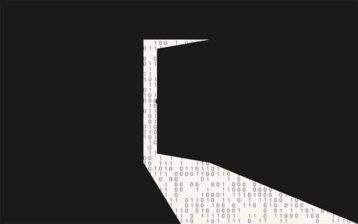Backdoor attacks rose by 173% between 2017 and 2018 and, by the middle of 2018, nearly 43% of all hacked websites had at least one backdoor program. As the situation worsens and detection becomes more complex, backdoor attacks have become more widespread. An infiltrated organization may be entirely ignorant of the attack due to the sophistication of the infection.
In addition, 43% of small and medium-sized firms have been victims of backdoor attacks, owing to a lack of sophisticated tools to protect access points and detect breaches. Cybercriminals are employing a variety of new strategies and malware strains to avoid detection by malware scanners. The longer a malware infection goes undiscovered in a system, the more harm it does to the organization.

WordPress is used by over 75 million websites, making them a tempting target for hackers.
Organizations using WordPress sites continue to be subject to backdoor attacks due to a lack of adequate security controls and monitoring technology.
Backdoors were created to assist software developers and testers. Therefore, their goal isn’t always harmful. On the other hand, hackers install backdoors to gain complete control of weak network components, allowing them to launch targeted cyberattacks. The attacks can be data breaches, server hijacking, website vandalization, and distributed denial-of-service (DDoS) attacks.
Table of Contents
What Is the Definition of a Backdoor Attack?

Backdoor means “achieved by utilizing indirect or dishonest tactics,” according to the Oxford definition. As this definition would imply, a backdoor attack involves using deceit to bypass the security measures of the system being hacked. However, there are histories behind the malware that go beyond the literary meaning.
The 1983 science fiction film WarGames, starring Matthew Broderick, brought backdoor attacks to the public’s attention. Broderick plays David Lightman, a mischievous adolescent hacker who utilizes a built-in backdoor to access a military supercomputer used to execute nuclear war scenarios. The psychotic computer, unknown to Lightman, is incapable of distinguishing reality from simulation. Additionally, the computer was given access to the U.S.’ entire nuclear arsenal, causing chaos to ensue.
What Is the Background of Backdoor Attacks?

Backdoor attacks were made possible by the widespread use of network operating systems and multiuser systems. In a paper presented at the American Federation of Information Processing Societies (AFIPS) conference in 1967, researchers Harold Petersen and Rein Turn discussed computer infiltration. They also identified a type of active infiltration attack that uses “trapdoor” entry points within the system to circumvent security and gain direct access to data.
A trapdoor function is a function that is easy to execute in one direction but difficult to compute in the opposite direction without additional information. However, since the invention of public-key cryptography, the term “trapdoor” has been replaced by “backdoor.” J.P. Anderson and D.J. Edwards wrote an exhaustive report on security breaches for the RAND company task group in 1970.
How Do Backdoor Attacks Work?
Backdoor attacks employ a variety of tactics that allow offenders to mask entry ports. These are some of the techniques mentioned below:

Before the invention of firewalls, port-binding schemes were widely employed by cybercriminals. Port binding entails precise data configurations that show where and how messages from a backdoor-infected machine are transmitted and delivered.
Hackers use connection availability as a tactic to attack a system for extended periods. The core of this method is that it gives backdoor attackers open-door access. However, the attackers can use the backdoor to access the network and install malware that allows them to stage their attack over a long time without being noticed by the organization.
With this strategy, hackers have become more adept at exploiting legitimate platforms because they have to work harder to get through protection systems. Cybercriminals use a legitimate platform, such as a firm, to store C&C server data using this approach.
What Are Examples of Backdoor Attacks?
Examples of backdoor attacks are listed below:
- PoisonTap
Hacker Sam created PoisonTap. PoisonTap is a backdoor software used by hackers to access nearly any website that users have logged into, including those that use two-factor authentication. PoisonTap is a terrifying piece of malware, but it can only be installed by putting a Raspberry Pi computer straight into the victim’s USB connection.
- Worms

Sobig and Mydoom, two common computer worms, create a backdoor on the attacked system, primarily a PC on broadband running Microsoft Windows and Microsoft Outlook. Backdoors like these appear to be deployed so fraudsters can send messages from affected computers.
A sophisticated attempt to plant a backdoor in the Linux kernel, discovered in November 2003, implemented a modest and subtle code change by undermining the revision control system. In this scenario, a two-line update looked to check a caller’s root access permissions. Still, it provided permissions to the system since it exploited assignment instead of “equality checking.” This distinction is commonly ignored and it could even be mistaken for a typographical error rather than a deliberate attack.
- DoublePulsar crypto jacked
In 2017, cybersecurity experts found that the DoublePulsar backdoor virus, which was created by the National Security Agency (NSA) of the U.S., was being used to track Windows PCs and install a cryptolocker on devices with enough memory and CPU capacity. The cryptolocker stealthily joined thousands of PCs into a massive crypto-mining botnet by stealing power from compromised systems to mine Bitcoin.
- Dual_EC (Asymmetric backdoor)

Dual EC is a cryptographic system that generates complex random numbers for encrypting user data using a mathematical formula known as the elliptic curve. Dual EC features a backdoor, which means it can be decrypted with an encryption key by high-level users. The NSA persuaded a lot of big firms to use Dual EC as their principal encryption protocol.
However, Edward Snowden published documents in 2013 proving that the NSA had the secret keys, allowing them to decrypt and read any Dual EC-encrypted communications. Dual EC was used by companies including Blackberry, RSA, Cisco and Microsoft in various products, exposing millions of users to NSA tracking.
What Is the Relationship Between Backdoor Attacks and Machine Learning?
Machine learning can interpret data that humans can’t see to deliver predictable results. These peculiar tendencies are ingrained in the data, but they could expose models to malicious attacks. Backdoor attacks are a type of adversarial machine learning assault. The attacker feeds the machine poisoned data to train the model, then starts the attack by displaying a minor trigger pattern at the test time.
What Is Data Poisoning?

Data poisoning is an adverse attack that attempts to influence the training database to control the forecast function of a trained model, e.g., identifying any unusual activity as safe. Without affecting the training process, a data poisoning assault can technically build easy-to-implement backdoors.
The relationship between data poisoning and backdoor assaults is that poisonous data can be introduced into the attacked system via the backdoor. Data poisoning and backdoor attacks also modify training data to make models malfunction during the assessment.
What Are the Backdoor Attack Statistics?
These are some of the backdoor statistics that will reveal current cybersecurity trends and provide a glimpse into what is projected for the future of cybersecurity:

- Malware and web-based attacks are the most expensive kinds of attacks, with businesses spending an average of $2.4 million on protection.
- Due to a rise in backdoors, miners, spyware and information stealers, overall malware detections in businesses increased by 79% from 2017.
- Each week, more than 18 million websites are attacked with malware.
- It takes a week or more for 34% of organizations infected by malware to regain access to their data.
- In 2018, 90% of financial institutions said they were targeted by malware.
- 25% of Alexa’s most popular WordPress plugins have significant vulnerabilities that might allow mining botnets to infiltrate.
- Small businesses are targeted by 43% of cyberattacks.
- Small enterprises account for 58% of all malware attack victims.
- Password policies aren’t strictly enforced in 69% of small firms.
- A malware attack typically takes 50 days to complete.
- A malware assault costs an average of $2.4 million to a corporation.
- By 2021, the yearly cost of cybercrime is expected to exceed $6 trillion.
- In the year 2023, cybercriminals are expected to steal 33 billion records.
- Small businesses lost an average of $34,604 due to cyber attacks in 2018.
Which Devices Can Be Infected by a Backdoor Attack?
A backdoor attack can infect the following devices:
- Phones
Researchers revealed that many mobile phone apps had “backdoor credentials,” which allow hackers to access users’ details. However, in India, one type of backdoor attack known as Hummingbad is software that utilizes deceptive tactics to get users to click on ads. It also installs a root-level backdoor on the infected device, allowing it to covertly install new apps and linger even after a system reboot.
- IoT devices like thermostats and home security systems

Persistent attacks can be launched through IoT devices. They have the potential to compromise network security and integrity. However, IT teams must be vigilant to put all strategies in place to combat the attack. For example, firewalls, intrusion prevention systems and antivirus software are frequently used to protect against attacks. Without infecting a laptop, workstation or server, attackers can get unstoppable continuous access to a company’s network by turning an IoT device into a backdoor.
- Routers
Vulnerable network devices like routers have been the attack vector of choice for cybercriminals and are one of the most effective approaches. A few years ago, hundreds of thousands of Deutsche Telekom users in Germany were affected by network failures that appeared to be caused by a vast DDoS attack. However, the attack was actually triggered by a malfunctioning router.
- Computers
Insecure ports of entry, such as obsolete plug-ins or input boxes, are used by cybercriminals to install malware. A backdoor in software or a computer system is an undocumented entry point that allows an administrator to debug or maintain the system without the user’s awareness.
Is a Backdoor Attack Illegal?
Backdoor assaults are, indeed, unlawful. Backdoors are not inherently harmful, but it becomes illegal when an intruder gains access to someone else’s server without the owner’s permission. On the other hand, a backdoor attack will be treated as an illegal offense, putting offenders at risk of penalty.What Are the Laws Regarding Backdoor Attacks?

Cyberlaw, often known as IT law, governs information technology, such as computers and the internet. It oversees the digital circulation of information, software, information security and e-commerce related to legal information technologies.
IT law encompasses components of contract, intellectual property, privacy and data protection laws rather than a separate area of law. However, freedom of speech, trade secrets, contracts and employment law, fraud, copyright, defamation, harassment and stalking are the primary topics of cyberlaw.
Also, in the U.S., the International Comparative Legal Guide (ICLG), an organization in charge of cybersecurity laws and regulations, stated some laws about cybersecurity. The federal Computer Fraud and Abuse Act (CFAA) is the primary statutory instrument for pursuing cybercrime in the U.K. and it includes both criminal and civil punishments. Some of the crimes that the CFAA addresses are:
- Unauthorized access to a computer
- Accessing a protected computer without authorization to defraud
- Willfully or recklessly damaging a computer
- Trafficking passwords
- Conveying threats
- Cyber-extortion
This is important:
As a result, punishment for this crime can range from one to 20 years in prison, depending on the offense. Any offense involving the intrusion of IT systems with malware such as ransomware, spyware, worms, Trojans and viruses, on the other hand, is a violation of the CFAA statute. Backdoor attacks and other such attacks can result in a prison sentence of up to 10 years.How to Protect Yourself from a Backdoor Attack
These are some of the protections that can be used to limit the risk of backdoor attacks:

- Limit the number of failed login attempts that are allowed to occur.
- Install firewalls that can prohibit unauthorized users from accessing your network.
- Adopt a thorough network monitoring strategy.
- Make use of a trustworthy anti-malware program.
- Downloading from the internet should be done with caution.
- Invest in a password manager.
- Make use of only the most recent software.
- Change your password regularly.
- Clicking on unsafe links should be avoided.
What to Do If You Are a Victim of a Backdoor Attack
If you are the victim of a backdoor assault, you must know what to do and act promptly. To protect yourself and fix the situation in the best way possible, you should take the following steps:

- Confirm the incident and determine whether the information was accessed.
- Gather and store evidence.
- Passwords for all online accounts should be changed.
- Any compromised website should be closed.
- Make a report to your local police department.
- Send an email to the Internet Crime Complaint Center with your complaint.
- If you believe your identity has been stolen, call the Social Security Administration’s fraud hotline.
How to Prevent a Backdoor Attack?
To prevent backdoor attacks from penetrating, every organization must implement all necessary strategies. These are the countermeasures to a malicious attack:

- Get a reliable antivirus product.
Anti-malware software that can detect and mitigate a wide range of threats is required for any business. Antivirus software detects and eliminates backdoor threats before they can infect the system.
- Scan any downloaded file.
Frequent scanning of downloaded files aids in the search and removal of malware. Scanning also protects against infection. Apart from backdoor attacks, you will also be protected from other malware like viruses and worms, as well as spyware, Trojans, ransomware and adware.
- Strictly visit websites that implement HTTPS only.
Attackers can’t meddle with the communications between your website and your users’ browsers if you utilize HTTPS. Intruders include both hostile attackers and respectable but intrusive businesses that infiltrate advertisements on websites.

- Have a firewall.
Firewalls defend computer systems or networks from cyber attackers by filtering out dangerous or excessive network traffic. Backdoor assaults software can’t access a computer or network via the internet because of firewalls.
- A vulnerability scanner.
Vulnerability scanners can be set up to check all network ports for password breaches and strange software applications. The scanning tool notifies systems to update software, detects malware and code defects and keeps track of wireless connectivity.
- Dark web monitoring.
Regularly observing the dark web can detect an incident that other technologies missed and notifies if there is data compromise. It also prevents a wider data breach and malware attacks such as backdoor attacks, ransomware attacks and other threats.
What Are the Backdoor Attack Prevention Tools?
The backdoor attack prevention tools are listed below:

- Avast
- Acunetix WVS
- Nmap
- oclHashcat
- Wireshark
- Nessus
- Maltego
- Social-Engineer Toolkit
- Netsparker
- w3af
- Metasploit Framework
What Is the Difference Between a Backdoor and a Trojan?
The difference between a backdoor and a Trojan is identified even from the definition of each concept. So, what is a Trojan? A Trojan is a malware that appears as actual software to fool the user into activating the attack. In contrast, a backdoor is a malware that infects a computer without the user’s awareness. A backdoor can take control of the system remotely after being infected, allowing it to run applications, destroy data and steal confidential files. A Trojan deceives a user into taking action, whereas a backdoor functions without the user’s knowledge.
What Are Other Threats?
There are many types of threats apart from backdoor attacks. A few of the most common ones are listed below:


